
The four weather models used by Complexity’s crew were not agreeing on the passage between the Canary Islands and Cape Verde. It was an 800 mile passage to the southwest, requiring a minimum of 6 days, likely longer. The models were not in agreement about the light winds along that route, and there was no concensus about when was the best time to leave and the best route (a direct course in sailing is not always the best way to go, even downwind).
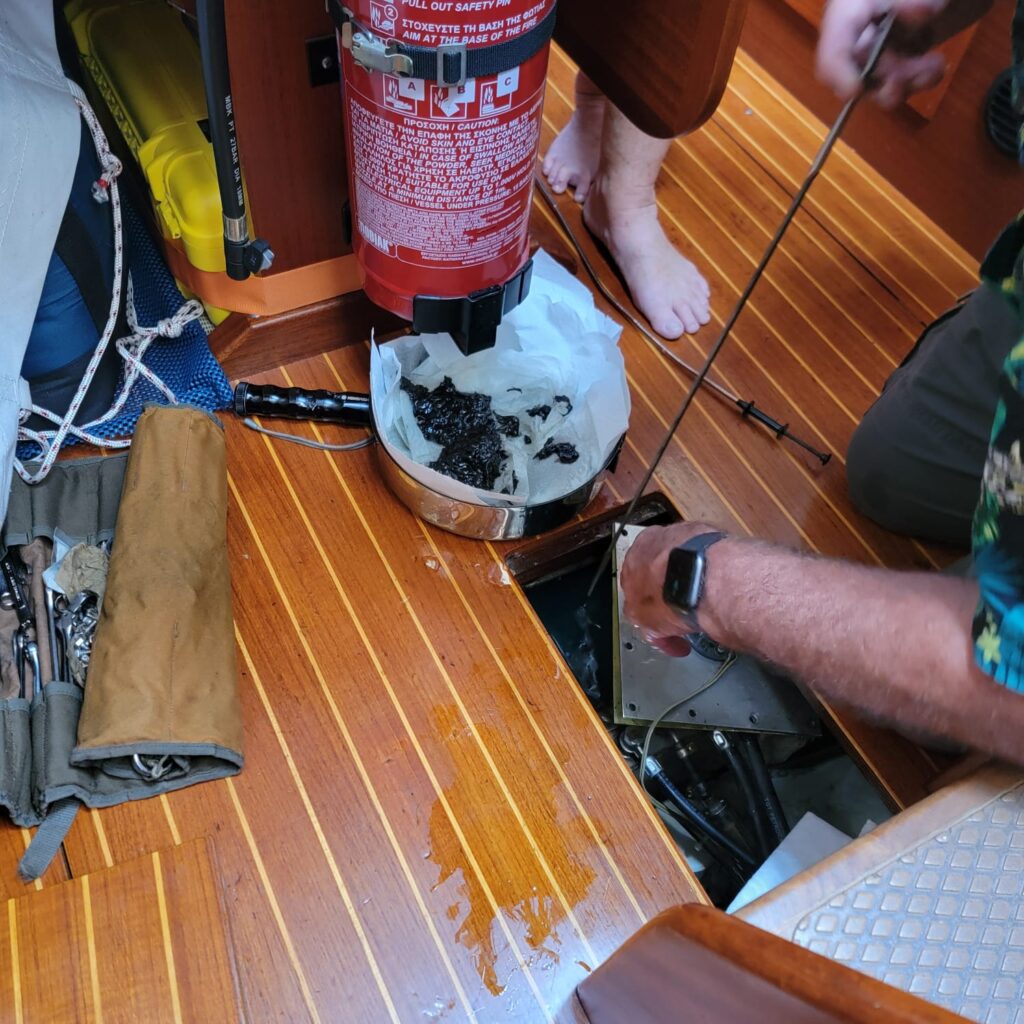
But what we did know was that another huge low pressure system was building in the North Atlantic and the winds in the Canaries were going to pin us down for at least a week to 10 days if we didn’t leave then. So the afternoon of the 20th we dropped our dock lines and headed out. It was super sloppy outside the marina and the engine began stalling and losing RPMs before we even had all the dock lines and fenders completely stowed. We reversed course and went back to our slip. Jim quickly discovered the biocide he had put in the fuel before they stored the boat last year had not done its job, and there was a massive pile of goo at the bottom of the diesel tank. He spent the afternoon and evening cleaning the tank as best he could and changing the filters.
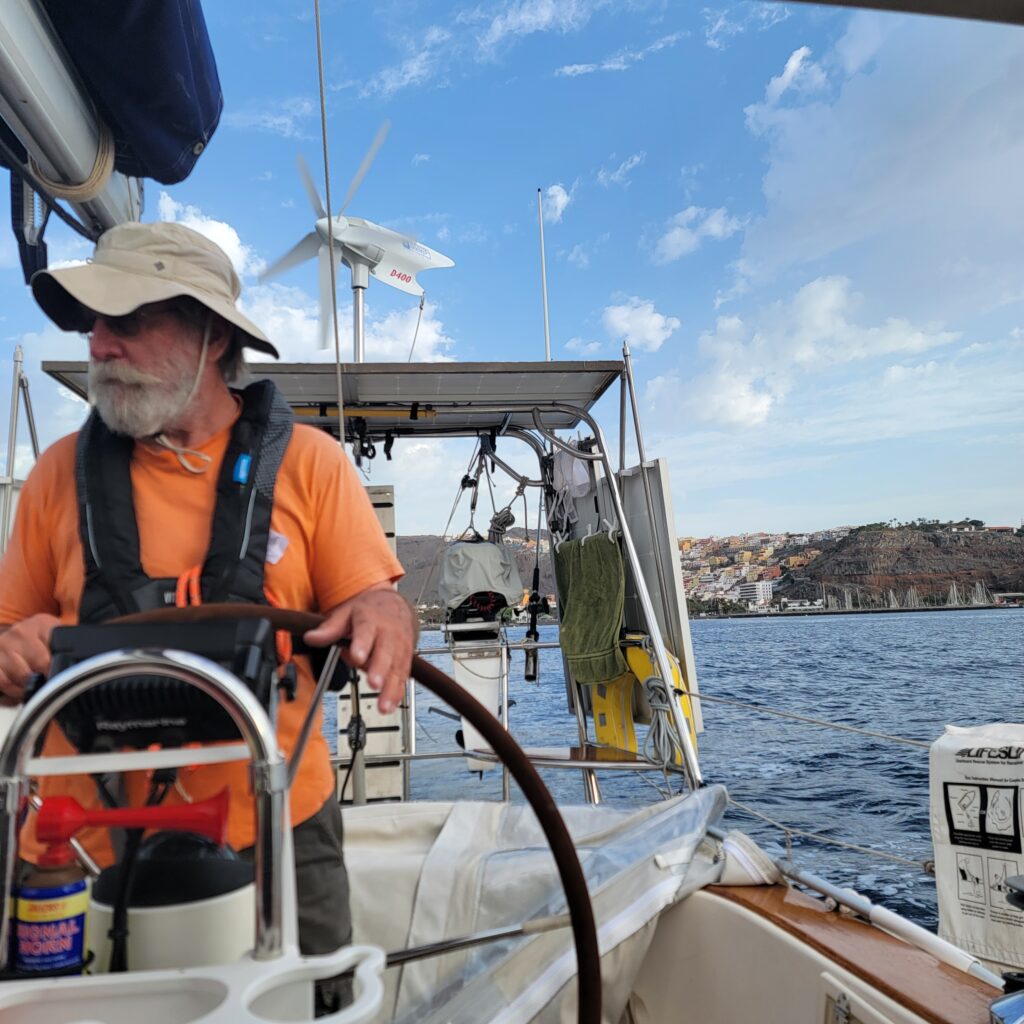
One last meal ashore and we made an early morning departure on the morning of the 21st. Sadly this was not to be the last of our fuel issues, but now he knew the issue. Twice more over the course of the next very rolly eight days the filters plugged again and he had to change them, once at 3:30 in the morning.
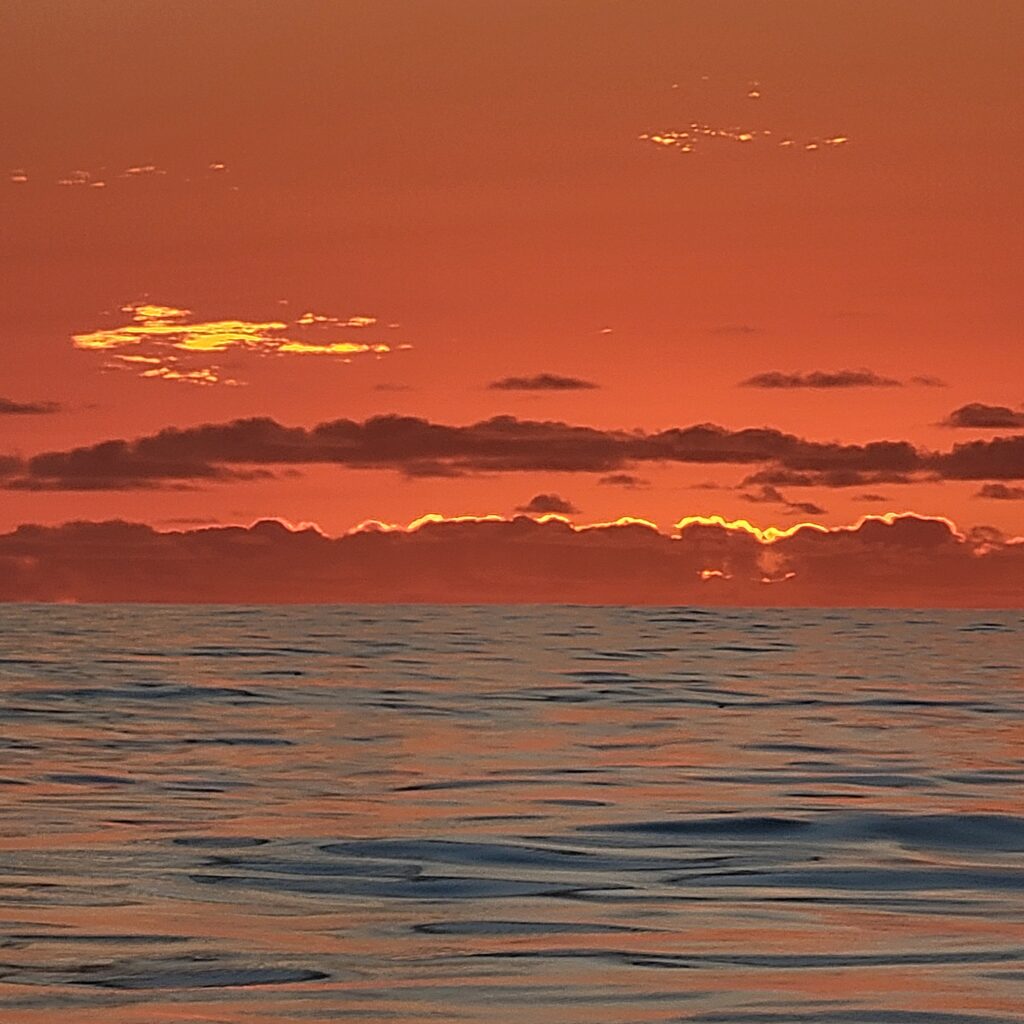
Having been to Africa and seen these gorgeous sunrises and sunsets courtesy of the dust from the Sahara Desert, I had high hopes the ones at sea would be epic. And I was not at all disappointed. The sunset and sunrise watches in the Pacific are lovely, but nothing like this. These were even more spectacular than what we had experinced in southern Africa on our safari trip two years ago.
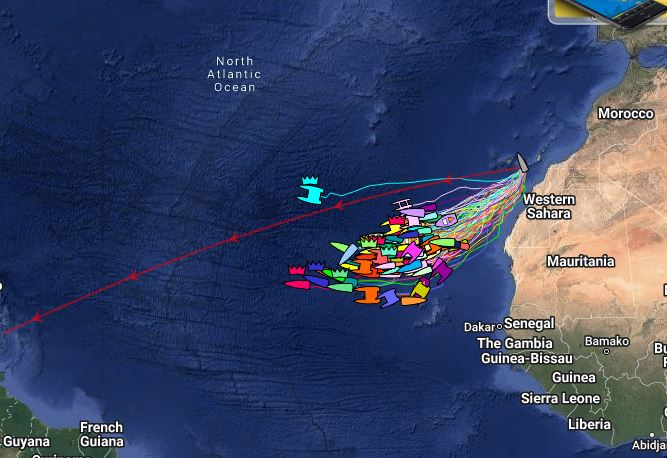
It turned out to be a pretty slow, rolly, but mostly uneventful trip south. We sailed until the winds were too light and motored off and on the first few days. But we were getting south of the big building weather mess north of us, so that was good. We also were getting south of the 140 boats leaving the Canaries for St Lucia on the ARC (Atlantic Rally for Cruisers).

One evening we had an unexpected visitor who abruptly crashed into the cockpit. Have to say I’m glad Barbara was awake and there with me. She knew just what to do with a bird that likely has flown into the rigging or sail, and could easily have a concussion. She made a little birdy bunkhouse out of a colander, plate and paper towels for bedding. Birdy was left overnight to shake off the headache and regain enough strength to fly away in the morning. And that’s what he did, quite happily when Barbara opened up his overnight accomodations and set him free.

Other boat traffic was few and far between, which is just fine with me on night watch. Although the first night out there was a fishing boat without AIS that passed much too close for my comfort. And one afternoon we did have to radio a tanker heading directly at us and ask them to alter course. They passed about a mile to starboard and that was as close as anyone we saw.
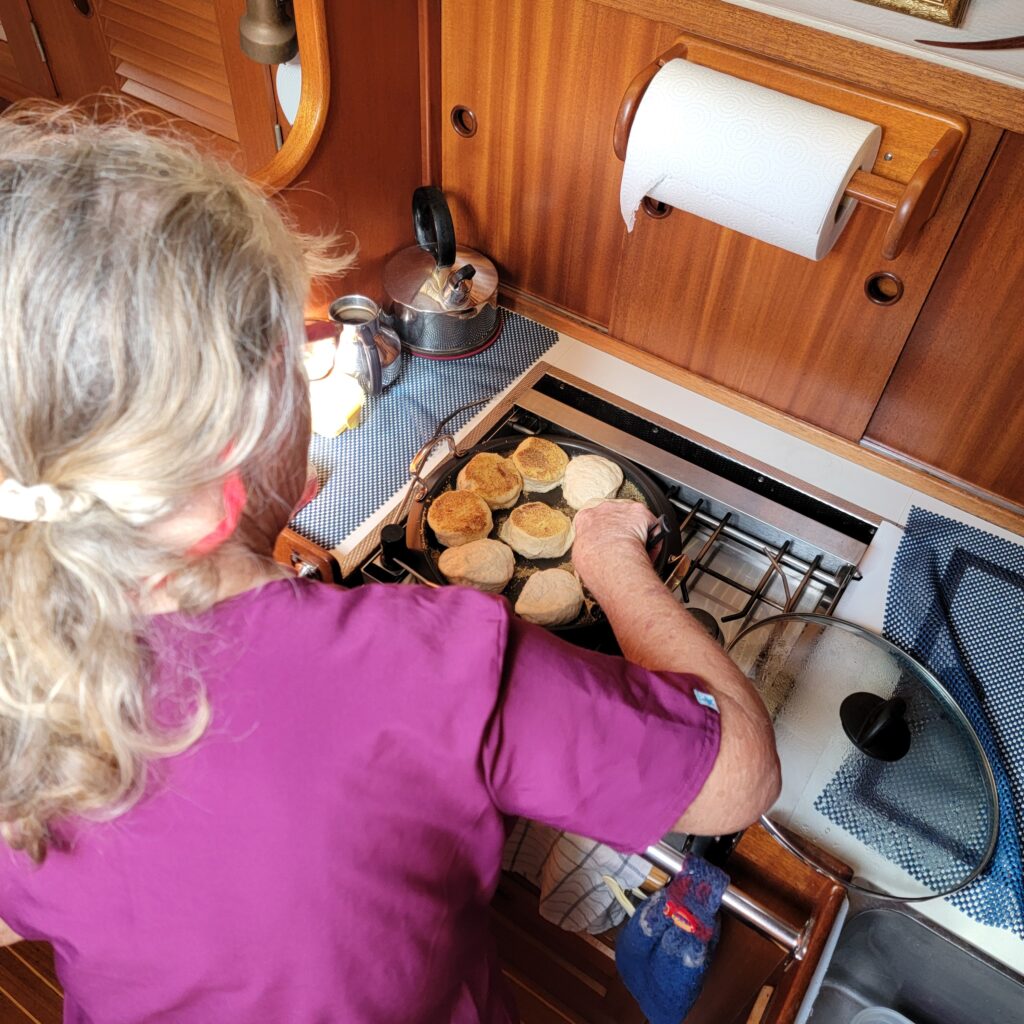
Barbara did some amazing passage cooking. When they were sailing from India to the Med right before Covid started, they had two young crew who were vegans. With the onset of Covid and subsequent shutdown of borders, it took six months to get up the Red Sea, through the Suez Canal and to the island nation of Cyprus, a country that would allow them to qarantine aboard then spend the rest of the pandemic at the marina. Barbara is an amazing cook, and made them english muffins every day. We had them one once on our passage south, and I’m certainly hoping for more as we head west next week.
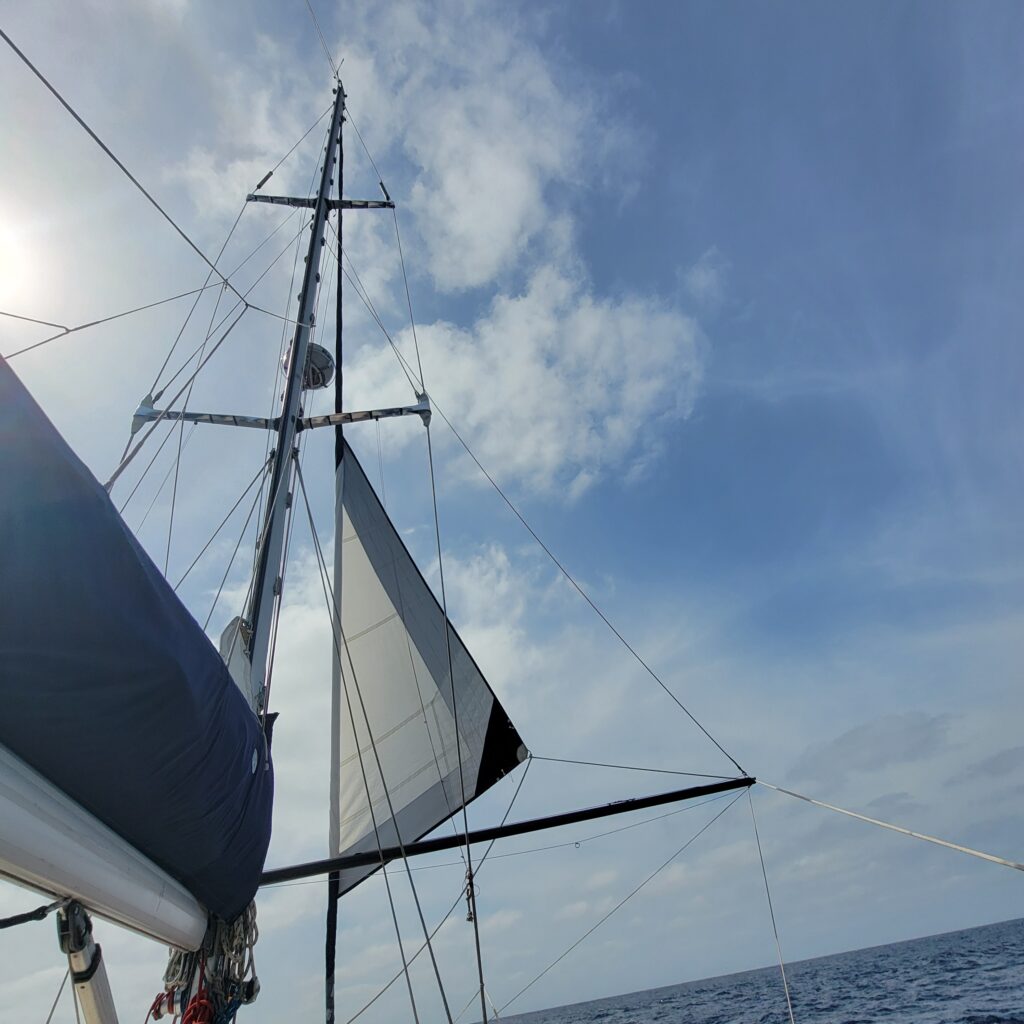
She also had found some turkey breast in La Gomera, and had other things onboard to make us a delicious Thanksgiving dinner. We had hoped for landfall that afternoon, but the winds were so light we ended up slowly sailing and staying another night at sea for a daylight arrival to Mindelo.
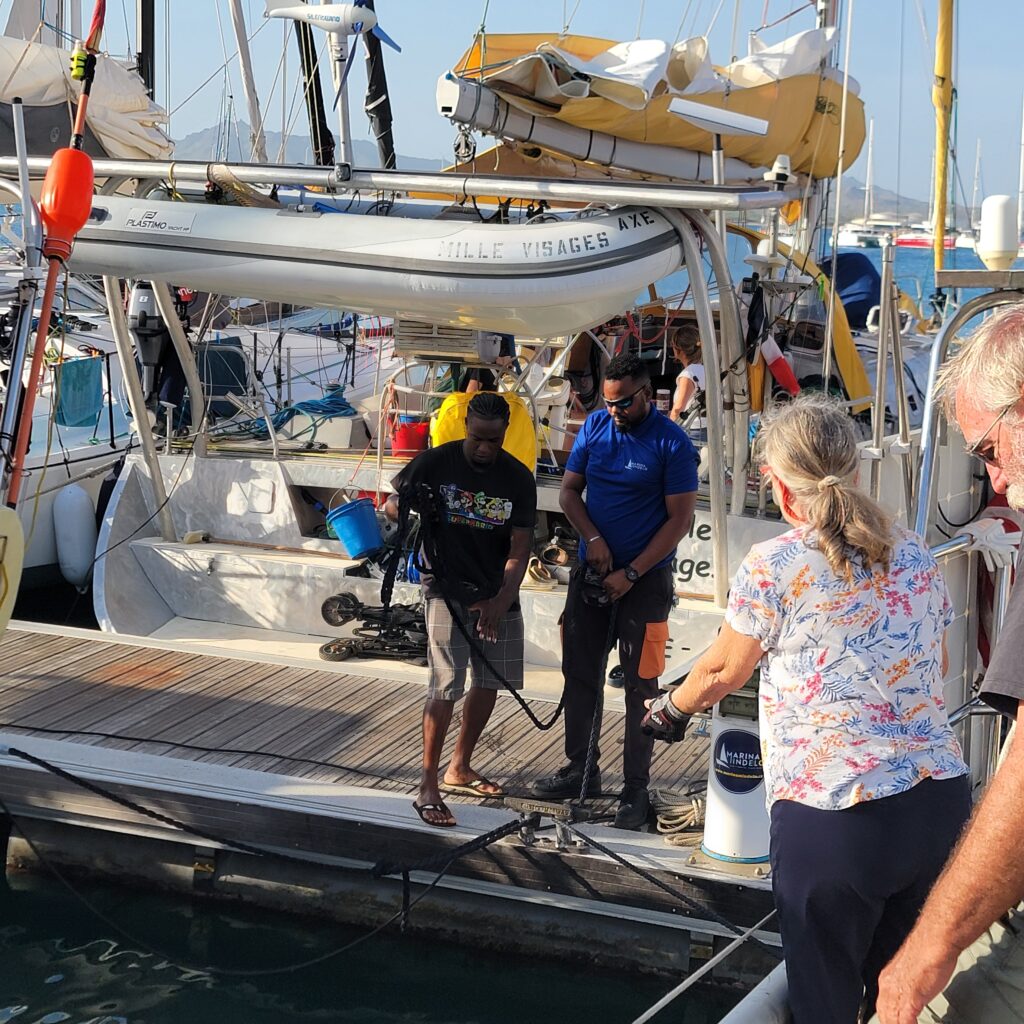
There were five strong young men helping us get Complexity backed into the dock between two other boats and tied up tight at the Mindelo Marina. Two lines came off each side of the bow and went forward to bouys anchored in the slipway, helped by two men in a small skiff. Another two lines came off each side of the stern to the dock. All of this happened with much yelling by the marina staff, but luckily it was in English so we could understand their instructions. Although we pretty much knew what the drill was going to be, having Med moored in the past.
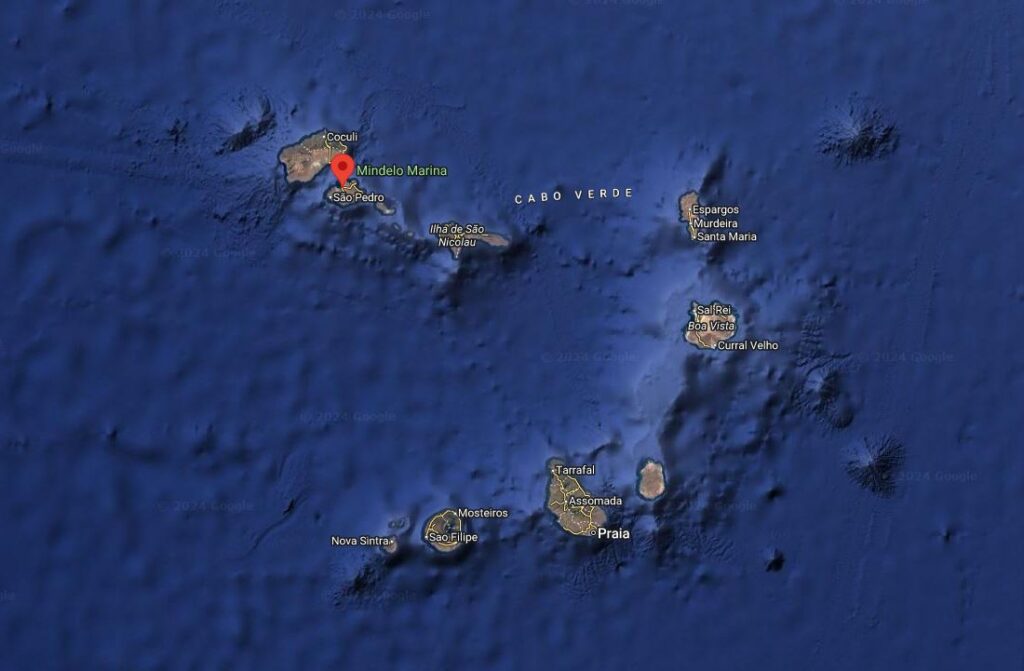
We’re tied up now at Marina Mindelo, in the town of Mindelo, on the island of Sao Vicente, in the country of Cape Verde. I mistankenly thought this would be a Muslim country, but it was formerly a Portugese colony, so Portugese is the national language and Catholic is the religion. More on this visit in the next blog.
Pix from this crossing are here